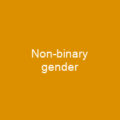Queer is an umbrella term for sexual and gender minorities who are not heterosexual or are not cisgender. Originally meaning’strange’ or ‘peculiar’, queer came to be used pejoratively against those with same-sex desires or relationships in the late 19th century. The expansion of queer to include queer heterosexuality has been criticized by those who argue that the term can only be reclaimed by those it has been used to oppress.
About Queer in brief
 Queer is an umbrella term for sexual and gender minorities who are not heterosexual or are not cisgender. Originally meaning’strange’ or ‘peculiar’, queer came to be used pejoratively against those with same-sex desires or relationships in the late 19th century. Critics of the use of the term include members of the LGBT community who associate the term more with its colloquial, derogatory usage, those who wish to dissociate themselves from queer radicalism, and those who see it as amorphous and trendy. The expansion of queer to include queer heterosexuality has been criticized by those who argue that the term can only be reclaimed by those it has been used to oppress. In the 2000s and on, queer became increasingly used to describe a broad spectrum of non-normative sexual andGender identities and politics. Academic disciplines such as queer theory and queer studies share a general opposition to binarism, normativity, and a perceived lack of intersectionality. Queer arts, queer cultural groups, and queer political groups are examples of modern expressions of queer identities. The word queer was used in mainstream society by the 20th century, along with fairy and faggot, as a pejorative term to refer to men who were perceived as flamboyant. Starting in the underground gay bar scene in the 1950s, then moving more into the open in the 1960s and 1970s, the homophile identity was gradually displaced by a more radicalized gay identity. At that time gay was generally a term including lesbians, as well as gay-identified bisexuals and transsexuals; gender-nonconformity, which had always been an indicator of gayness, also became more open during this time.
Queer is an umbrella term for sexual and gender minorities who are not heterosexual or are not cisgender. Originally meaning’strange’ or ‘peculiar’, queer came to be used pejoratively against those with same-sex desires or relationships in the late 19th century. Critics of the use of the term include members of the LGBT community who associate the term more with its colloquial, derogatory usage, those who wish to dissociate themselves from queer radicalism, and those who see it as amorphous and trendy. The expansion of queer to include queer heterosexuality has been criticized by those who argue that the term can only be reclaimed by those it has been used to oppress. In the 2000s and on, queer became increasingly used to describe a broad spectrum of non-normative sexual andGender identities and politics. Academic disciplines such as queer theory and queer studies share a general opposition to binarism, normativity, and a perceived lack of intersectionality. Queer arts, queer cultural groups, and queer political groups are examples of modern expressions of queer identities. The word queer was used in mainstream society by the 20th century, along with fairy and faggot, as a pejorative term to refer to men who were perceived as flamboyant. Starting in the underground gay bar scene in the 1950s, then moving more into the open in the 1960s and 1970s, the homophile identity was gradually displaced by a more radicalized gay identity. At that time gay was generally a term including lesbians, as well as gay-identified bisexuals and transsexuals; gender-nonconformity, which had always been an indicator of gayness, also became more open during this time.
As this binary fabric became embedded into the social fabric, queer began to decline as an acceptable identity in the subculture. None of the terms, whether inside or outside of subculture, equated to the general concept of a homosexual identity, which only emerged with the ascension of a binary understanding of sexual orientation in the 1930s and 1940s. Similar to the earlier use of gay, the term was adopted in the mid-20th century among gay men to adopt a more assimilationist identity in order to claim or self-identify with perceived normative masculine status. In contrast to the terms like ‘degenerate’ and ‘homosexual’ used within the sub culture, medical practitioners and police officers tended to use pathological terms like ‘pervert’ and ‘homosexual’. The expression ‘in Queer Street’ is used in the United Kingdom for someone in financial trouble. The Northern English expression \”there’s nowt so queer as folk\”, meaning ‘there is nothing as strange as people’ employs this meaning. The term ‘queer’ means ‘not quite right’ or a person with mild derangement or who exhibits socially inappropriate behaviour. It might refer to something suspicious or something that is questionable or suspicious. Over time, queer acquired a number of meanings related to sexuality and gender, from narrowly meaning ‘gay or lesbian’ to referring to those who are “not heterosexual’
You want to know more about Queer?
This page is based on the article Queer published in Wikipedia (as of Jan. 04, 2021) and was automatically summarized using artificial intelligence.







